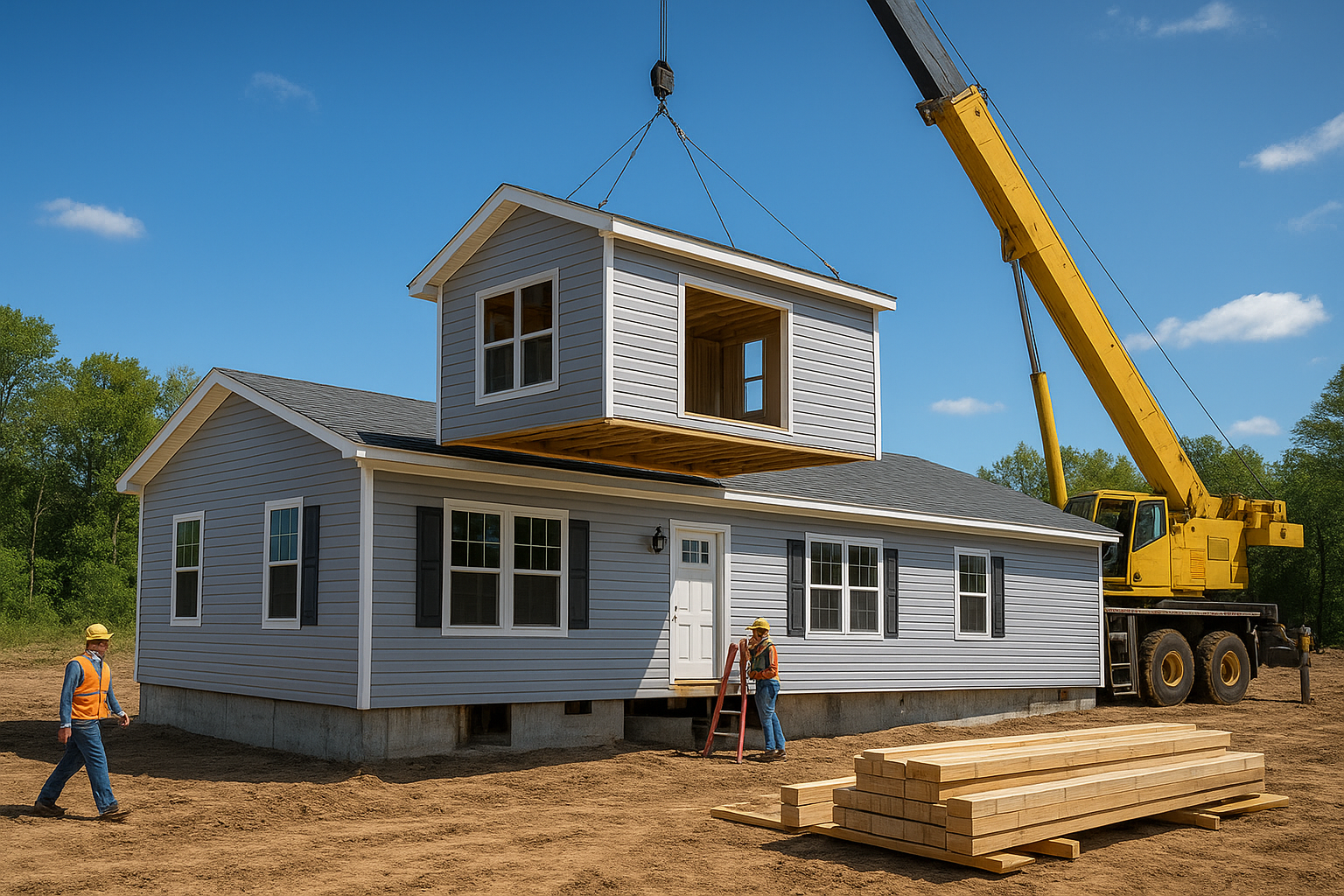The Housing Market Under Trump: What to Expect
Here’s a chart illustrating U.S. housing market trends over time—a useful visual to ground our discussion of what to expect under President Trump.
1. Deregulation & Supply Expansion
- Opening federal lands: Trump has proposed unlocking millions of acres of federally owned land for residential development, potentially easing supply constraints in select regions and helping moderate price increases.
- Deregulatory efforts: A presidential memorandum focuses on reducing burdensome regulations—like zoning, permitting, building codes—to lower construction costs and expand housing supply.
2. Tariffs & Immigration Policy: Inflationary Pressures
- Tariffs on materials: Tariffs on imports from Canada and elsewhere could raise construction costs significantly—for example, a tariff on Canadian lumber could add thousands to building expenses.
- Immigration restrictions & labor shortages: Mass deportation or tightened immigration could exacerbate shortages in the construction labor force (immigrants comprise ~30% of that sector), further driving costs.
3. Mortgage Finance Reform
- Privatizing Fannie Mae & Freddie Mac: A potential IPO could end government-backed guarantees, increasing competition—but perhaps also raising mortgage rates and reducing market liquidity.
Tax incentives for investors: The return of 100% bonus depreciation could incentivize investment in single-family rentals, potentially reshaping investor-driven markets.
4. Interest Rates & Fed Influence
- Pressure for rate cuts: Trump has been pushing for lower Federal Reserve interest rates to stimulate home building and improve affordability.
- Limits to efficacy: Real-world dynamics suggest that rate cuts don’t always translate into lower long-term mortgage rates. Factors like federal deficits and bond yields heavily influence rates.
- Conflict with the Fed: The administration is taking actions to restructure Fed leadership—particularly criticizing and attempting to remove officials like Governor Lisa Cook—potentially tilting policy toward looser rates.
5. “Freedom Cities”: A Bold Experiment
- Trump’s proposal for “Freedom Cities”—master-planned urban centers on federal land—advocates rejuvenating housing supply, development, and local economic activity. But critics question feasibility, environmental impact, and governance.
6. Market Impacts Across Buyers, Sellers, Renters
- Buyers: Mortgage rates could remain elevated—around 7%. High costs and borrowing rates may persist, challenging affordability.
- Sellers: Some uptick in demand may occur, especially for lower-priced homes, but overall recovery could remain sluggish.
- Renters: Rising home prices may push more people into renting; stagnant rent growth combined with higher wages could make renting relatively more accessible for some. Low-income households may still struggle.
Summary Table
| Policy Factor | Expected Impact |
|---|---|
| Land development & deregulation | May expand supply and relieve price pressure in select areas |
| Tariffs & immigration restrictions | Construction cost increases, supply challenges |
| Mortgage reform (Fannie/Freddie privatization) | Less lending support, potentially higher rates |
| Tax incentives (rental investors) | Increased investor demand, focus on rentals |
| Fed rate cuts & pressure on Fed | Potential rate lowering—but with uncertain mortgage impact |
| Freedom Cities | Long-term, speculative—uncertain effects |
| Buyer/Seller/Renter outlook | Higher rates, modest seller activity, renter pressure |
Final Thoughts
The trajectory of the housing market under Trump is complex and regionally variable. Pro-supply and tax incentives may benefit development and investor-driven segments, yet the inflationary effects of tariffs and immigration constraints could counteract these gains.
Mortgage finance reform adds another layer of uncertainty—privatizing major mortgage entities may raise consumer borrowing costs. And despite political pressure, rate cuts may not translate neatly into lower mortgage rates due to broader economic factors.
For most individuals making housing decisions, the best guide remains personal financial preparedness—not policy forecasts.
What Real Estate Buyers, Sellers & Investors Should Expect
Here’s the short, straight-shooting version for August 20, 2025.
Trump’s Housing Market in 2025: What Buyers, Sellers & Investors Should Expect
What’s changed lately (macro snapshot)
-
Mortgage rates: ~6.6% on a 30-year fixed (weekly FRED series).
-
Prices: Month-over-month slight declines for three straight months (July -0.1% s.a.).
-
Inventory: Active listings up ~25% YoY in July (post-pandemic high, still below 2019).
-
Policy backdrop: A 10% universal tariff took effect this spring (inflationary for materials); homelessness policy shifted away from “Housing First.”
If you’re buying
-
Leverage rising inventory + softer prices. Bid with data (recent comps, DOM). Ask for concessions (closing credits, repairs) and 2-1 buydowns if the seller prefers price optics.
-
Rate strategy: With 30-year near mid-6s, lock if the payment works; float only if you can afford volatility. Track weekly FRED + daily lender quotes.
-
New construction: Builders are more flexible when permits start slowing—look for free upgrades or rate buydowns from preferred lenders. Recent data show starts improving but still below what’s needed, so deals are case-by-case.
-
Material costs risk: The 10% tariff can pressure prices on appliances, steel, and finishes—good reason to negotiate post-inspection credits if costs pop up.
If you’re selling
-
Price to the market that exists, not last spring. Three consecutive MoM price dips + more choices for buyers mean overpricing = sitting. Aim to be the best-valued comp in your micro-area.
-
Expect longer DOM & more givebacks. Pre-inspect, fix obvious items, and budget for credits or a seller-paid buydown to widen the buyer pool.
-
Commission rules shifted. After the 2024 NAR settlement, compensation is more negotiable. Some sellers still offer buyer-agent comp to boost traffic—decide based on your local norms. If you’re an investor
-
Cap rates vs. debt costs: With mortgages around mid-6s, underwrite with higher exit cap rates and conservative rent growth. Keep a re-fi cushion; don’t bank on rapid rate cuts. (Fed pressure to aid housing exists, but cuts aren’t guaranteed.)
-
Build/rehab budgets: Assume tariff pass-through on materials and possible contractor price adjustments; add 5–10% contingency.
-
Policy watch—GSE reform: Talk of privatizing Fannie/Freddie introduces funding-liquidity uncertainty over time; keep an eye on FHFA moves and loan pricing.
-
Sun Belt vs. supply: New supply pockets + slower demand can pressure rents locally; stress-test DSCR with modest rent growth and flat occupancy.
Source: IA








